& Construction

Integrated BIM tools, including Revit, AutoCAD, and Civil 3D
& Manufacturing

Professional CAD/CAM tools built on Inventor and AutoCAD
13 min read
This post is also available in: Français (French) Italiano (Italian) Deutsch (German) 日本語 (Japanese)
In this comprehensive 2022 Fusion 360 Retrospective, check out last year’s top five new product areas that helped you achieve new heights.
As we reflect on the past year and all we’ve accomplished together, it’s exciting to look back at the numerous product releases that have taken place. From ground-breaking features, to new integrations, and tons of workflow improvements, the past year has been full of innovation and growth.
We’re working hard to help you stay competitive in the rapidly evolving design and manufacturing industry. The recent challenges of supply chain volatility and increasing customer expectations, paired with rapid technology advancements, can be difficult to manage, but also present significant opportunities for growth. Going into last year, we invested in 3 key areas of development:
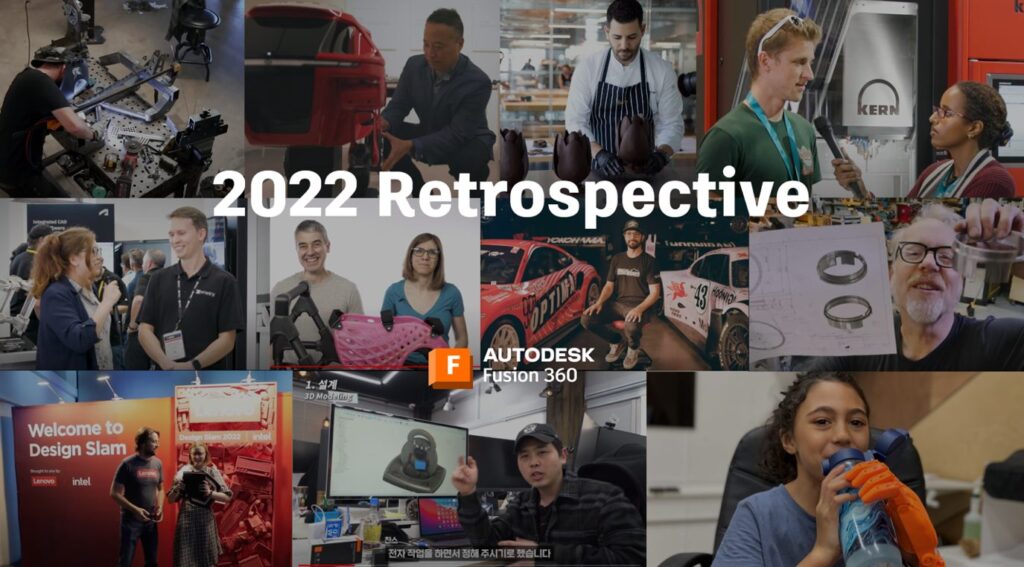
In this retrospective, we’ll highlight the top five areas of Fusion 360 that have had the greatest impact in 2022.
We realize it’s important to work smarter, not harder. It’s even better to have the software do the work for you. As a result, we spent a lot of focus on automation and intelligence. Allowing you to make better design decisions and export more design alternatives.

Automated Modeling became one of the most exciting pieces of functionality we released last year. We were thrilled to see all the different design concepts you shared. As Fusion 360 user/2017 Sheet Metal Design Challenge winner Eric Tremblay puts it best:
“Fusion 360 Automated Modeling is a great generative design tool. It enables you to explore generatively designed parts rapidly and efficiently with relatively fast computing. I’ve grown to love the shape of generative designed parts over the last few years and see more and more use cases on Instagram. It’s definitely where the future is heading.”
After listening and spending time improving the experience, you’ll be glad to hear that Automated Modeling is out of preview. It’s now an official tool within the Design workspace, available to everyone.
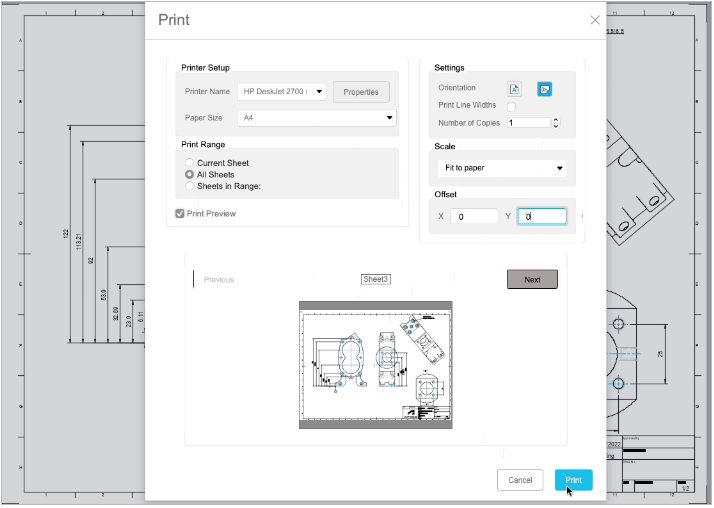
2022 was a big year for drawings functionality. Every major update last year included new features to enable better workflows or significant improvements to make your lives easier.
You can now document your hole specs with hole table, manage revisions with better revision control tools, and create auxiliary views. You can also dimension arc lengths and jogged radius dimensions. In addition, you can edit model properties and units within the title block.
Towards the end of 2022, we also introduced improvements allowing you to change line types, width, and color. You can also bring in document settings from a template or other drawing and duplicate sheets. And finally, the long-awaited advanced print controls are now here.
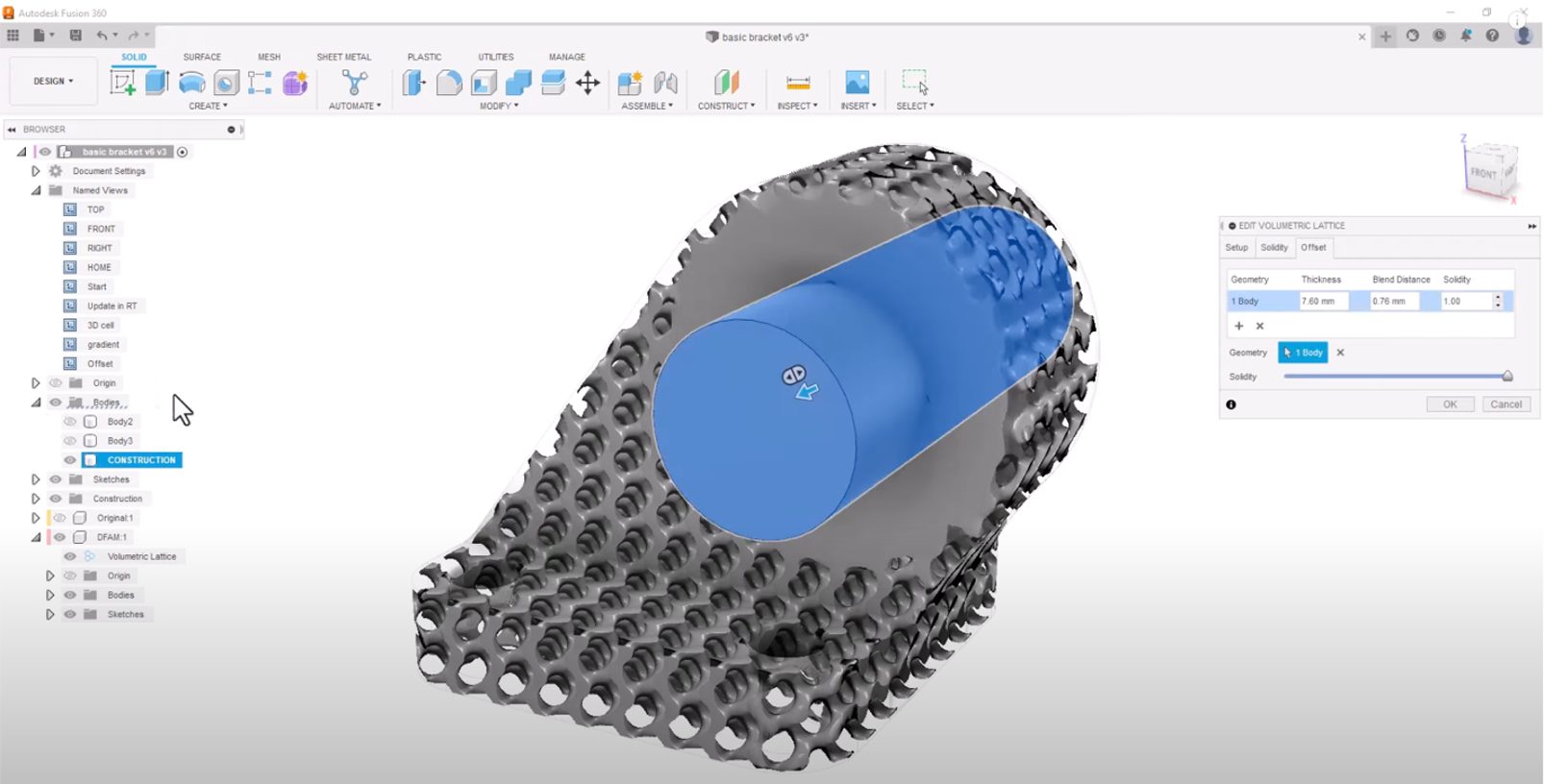
Volumetric Lattice enables you to do exactly what it sounds like — transform the internal volume of a model into lattices. This feature is now out of preview and available as part of the Product Design Extension.
Volumetric Lattice automates flexible lattice creation. It allows you to design custom cell shapes, create gradients of solidity, and directly slice a structure without needing to generate a mesh. You can now take your latticed models all the way to the Manufacture workspace with tightly integrated additive manufacturing tools. Check out these awesome slides with a latticed midsole designed by Fusion 360 user @hanbeom_na.
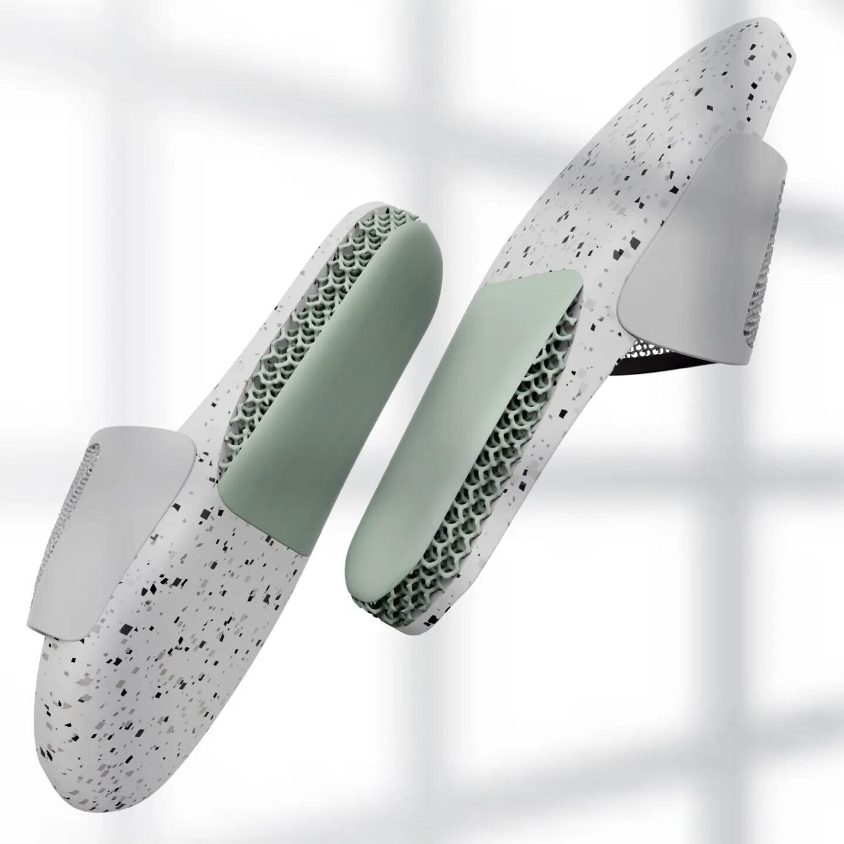

Many of you work with teams that are distributed all over the world. A driving force behind our development efforts is wanting to make it easier for you to collaborate on assembly designs. Now, with the latest implementation of Replace Component and Resolve External Components, it’s easier for teams to manage changes throughout the design process.
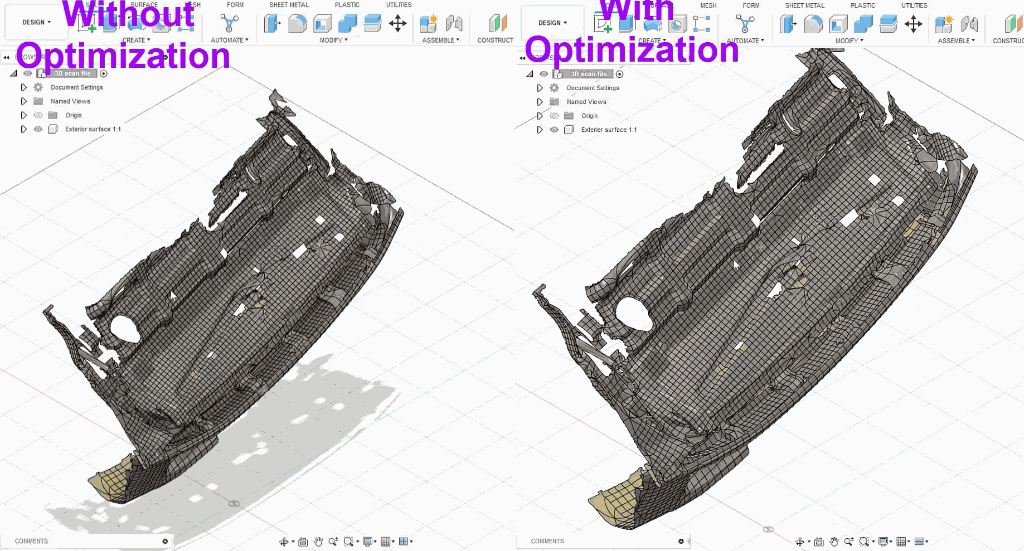
Shiny new features and functionality are exciting, but performance and stability across all areas of Fusion 360 are always top of mind for us. We doubled down on fixing what wasn’t working well and improving the usability of Fusion 360 across the board.

In 2022, we had 14 product update releases, introduced 219 new features, and a whopping 10,163 improvements. In addition to improving how well a feature works, we’ve also made a significant boost in modeling performance, navigation performance, and overall stability of Fusion 360 when dealing with complex geometry. Here are the top 10 areas that should feel faster than before:
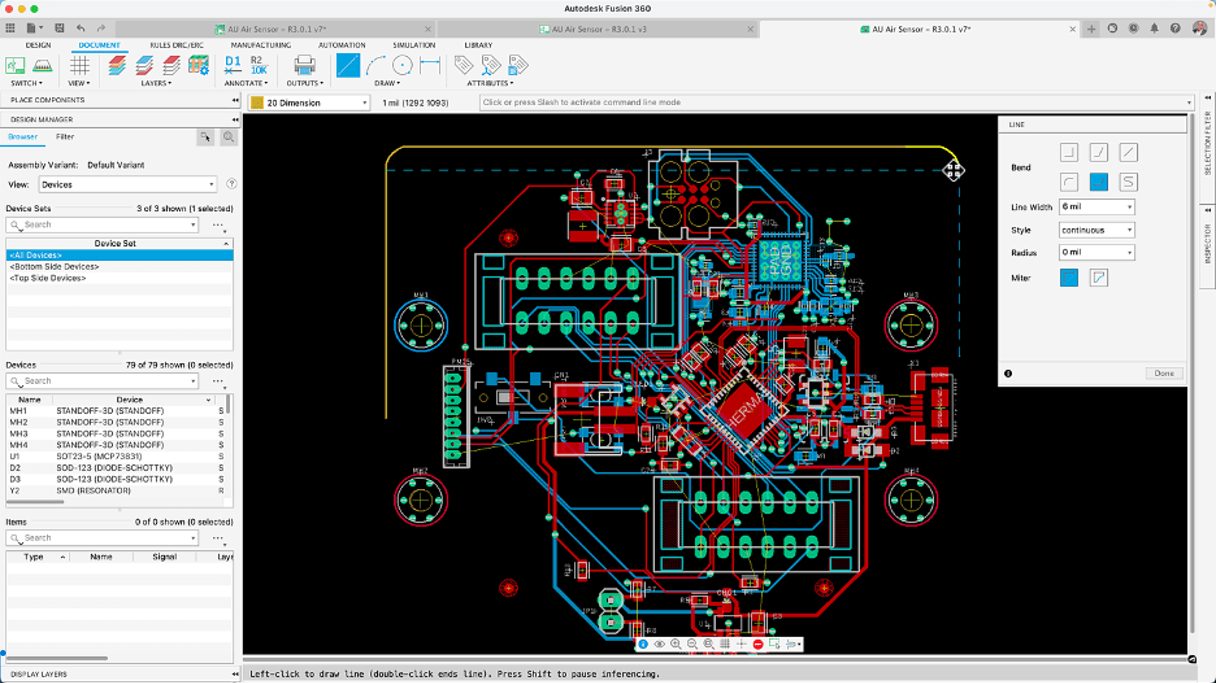
In truth, unifying siloed workflows has always been our core mission from day one. Last year, we ramped up our investments in maturing aspects of Fusion 360 core capabilities. This included improving overall performance and bringing disciplines closer together. Electronics design is often a key step in the manufacturing process, but it’s often a siloed and disjointed process.
As announced in January 2020, we’ve been working to ramp up and mature the Electronics Design tools in Fusion 360. The introduction of tools like the Place Component Panel, Automatic EAGLE Library Importer, Layer Stack Manager, Pattern/Arrange command, Flat Cap Lines, and updated tool icons make it easier for you to use these commands and get your designs laid out quicker.
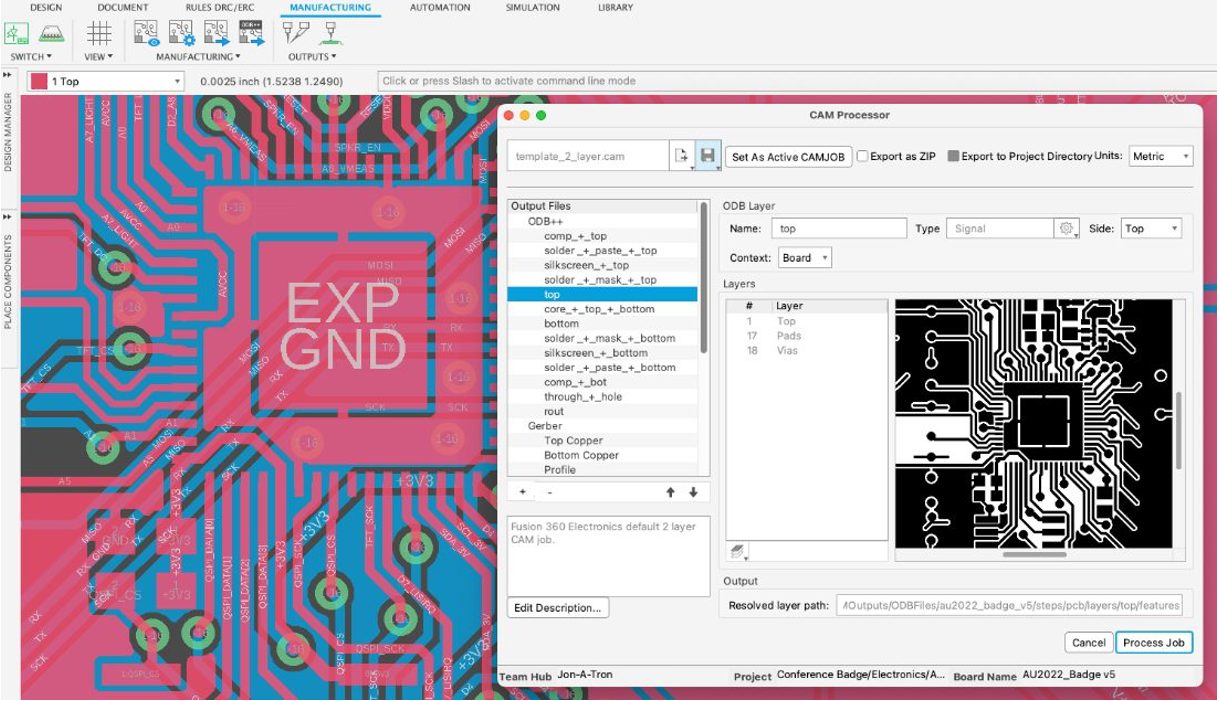
We also spent a good chunk of the second half of 2022 enhancing existing functionality, improving performance, and fixing long-standing issues.
Additionally, the Package Generator now has a much more comprehensive library of components. The ability to sync your library index gives you the freedom to move your work from one machine to another. With many stability fixes and performance enhancements, the Electronics environments are running faster than ever.
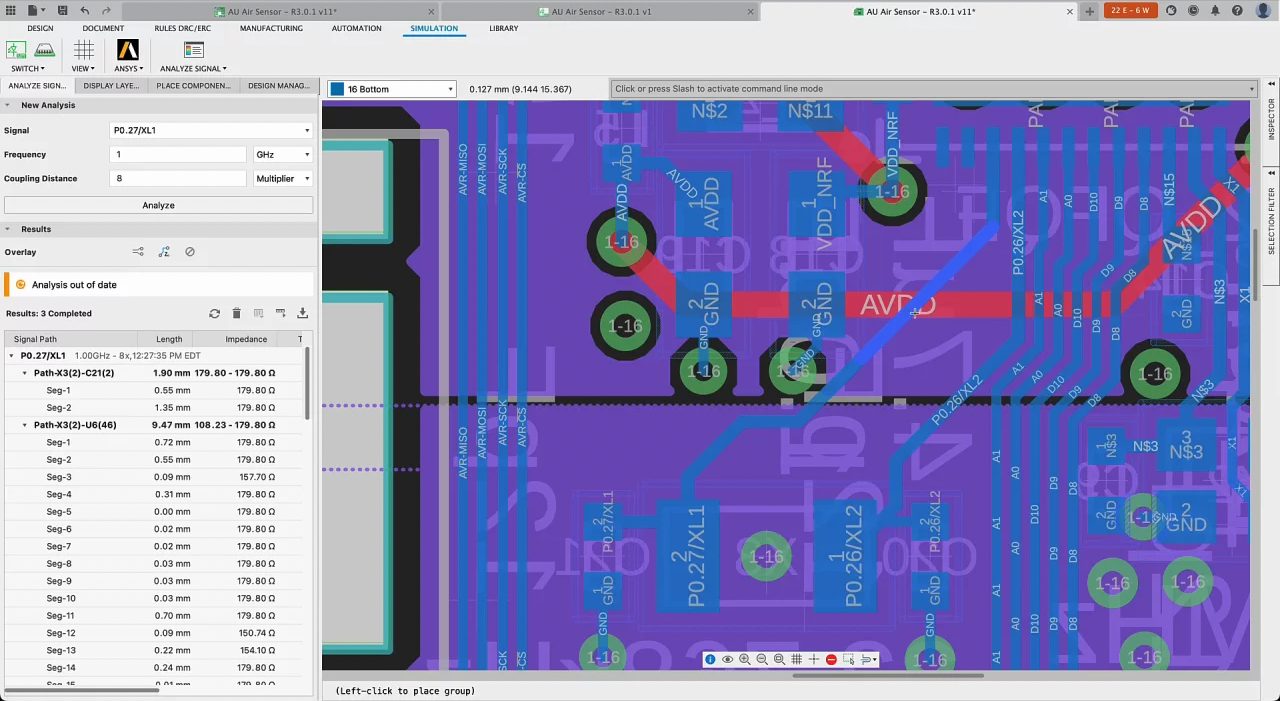
We worked with Ansys to give you on-demand PCB electromagnetic performance insights. This functionality is directly within the Electronics design environment as part of the new Signal Integrity Extension. You can now collaborate with designers and engineers to inspect and resolve issues with PCB signals early in the design phase.
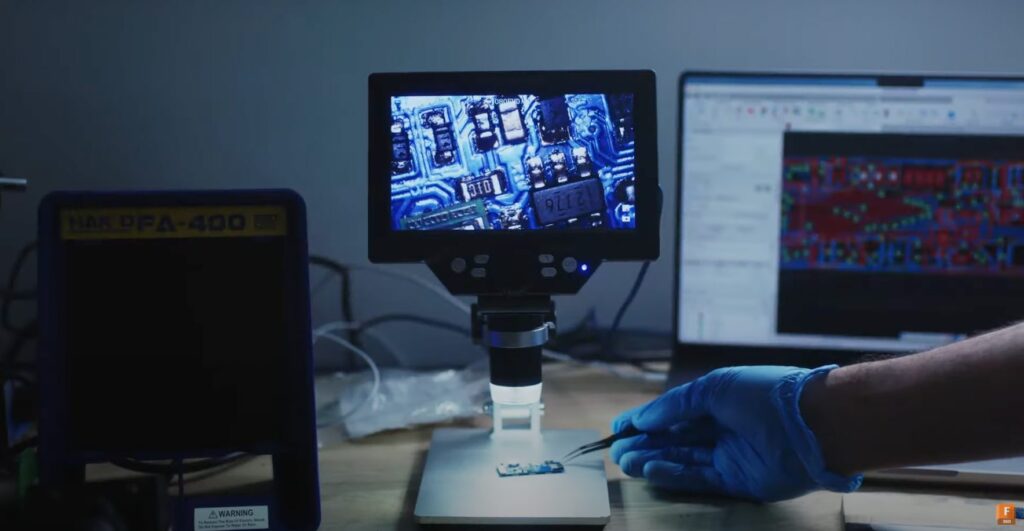
Integrating Electronics Design within Fusion 360 has helped the folks at Limbitless Solutions have their board and schematics open simultaneously, speeding up the design process and making it easier to adapt to changes.
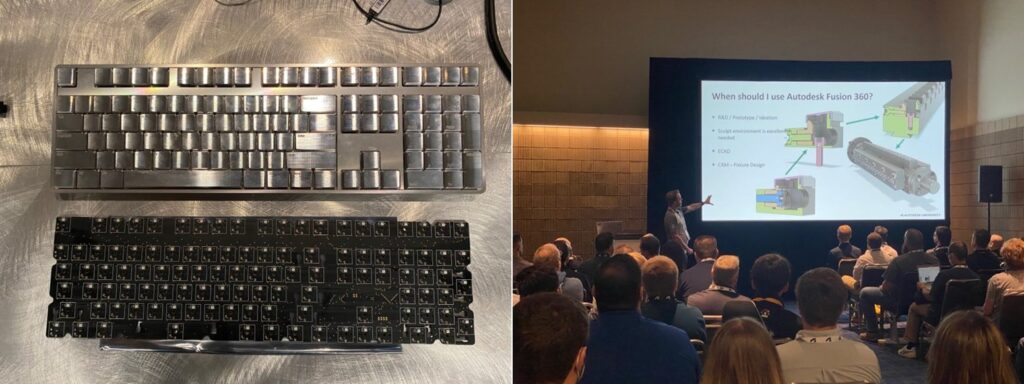
The culmination of all these efforts was also exemplified by Grumpy Sloth, a boutique mechanical keyboard startup in New Zealand. They set out to design and manufacture their own keyboard from the ground up. This included a custom PCB designed with Fusion 360. They unveiled their first keyboard and entire design workflow last year at Autodesk University 2022 in New Orleans. It was an awesome session to attend, and you can watch it for free here.
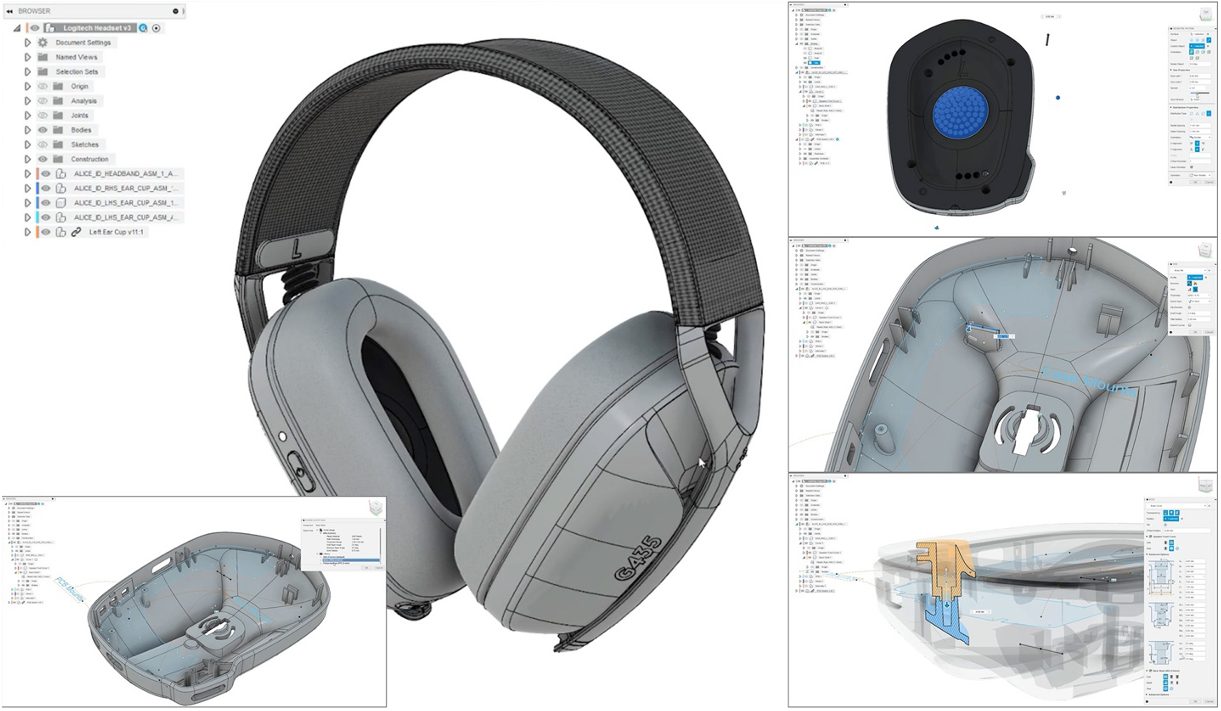
If you’re trying to bring a consumer product to life, you’ll need to account for injection molding requirements. Since January 2022, the Product Design Extension has seen major improvements and updates to its plastic part design toolset.
The ability to create plastic ribs in the boss command, the flexibility of the rest tool (which helps you create flat areas on curved plastic parts), and the addition of snap-fit improvements such as selection modes and rotation options have made designing plastic parts for injection molding a much more integral of the design-to-manufacturing process. Learn how the Product Design Extension can help accelerate your plastic part design workflow in our latest what’s new video.

With Design Advice, you now have a complete manufacturing-aware plastic part design solution. Design Advice allows you to identify manufacturability concerns based on best practices for plastic injection molding. It then provides recommendations to address them in Fusion 360. This knowledge can help prevent costly redesigns and save time going back and forth with the mold designer.

Beyond the design workflow, the injection molding simulation tools (as part of the Simulation Extension) give you a look into the molding process of your parts. This can help you identify common issues such as sink marks, air entrapments, warpage, shrinkage, and weld lines. Not only did we work to improve the usability and performance of the study type, but we also created content to help you get up to speed, including helpful webinars, videos, and learning content.
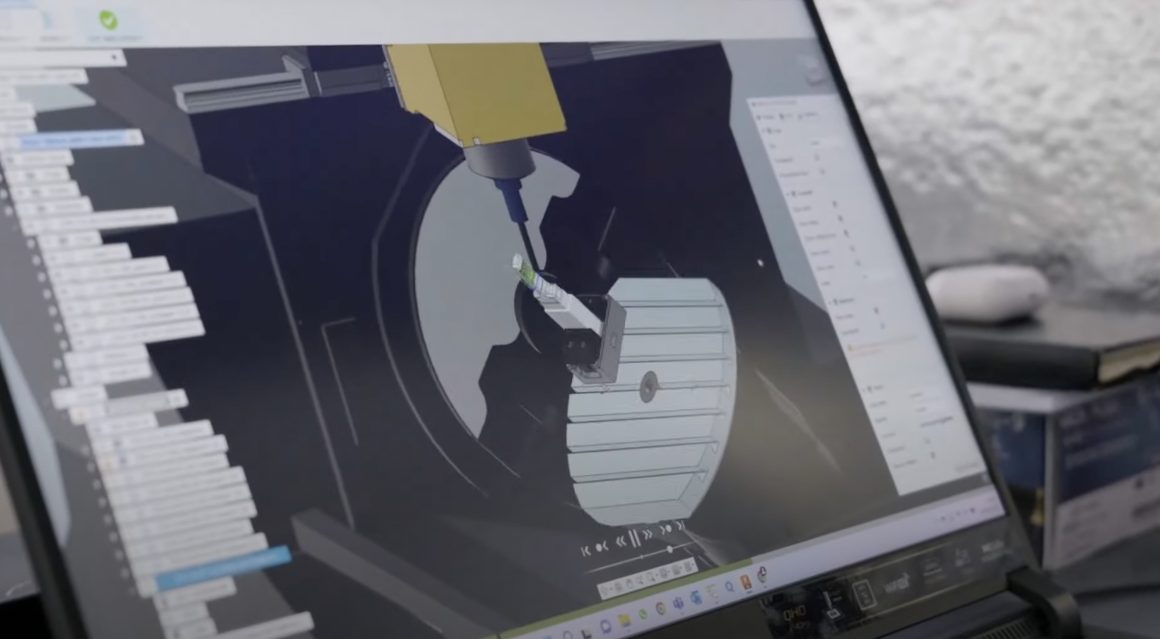
One area of Fusion 360 that has seen the most amount of change is the Manufacture workspace. In the first half of 2022, we rebalanced the milling tools found in core Fusion 360 and the Machining Extension.
With 3+1 and 3+2 interactive tool axis orientation controls (surface normal, align to view, and turn & tilt) available to all users, you now have all the tools you need for reliable 2, 2.5, and 3-axis milling. With 4-axis and 5-axis simultaneous machining capabilities as part of the Machining Extension, you now have a true multi-axis powerhouse for your advanced automation needs.
It was a real treat to hear Brown & Holmes (Tamworth) LTD, PEMBREE, and Nerc Precision Engineering tell their stories of how they could connect/automate labor-intensive processes, win big projects, and stay one step ahead.
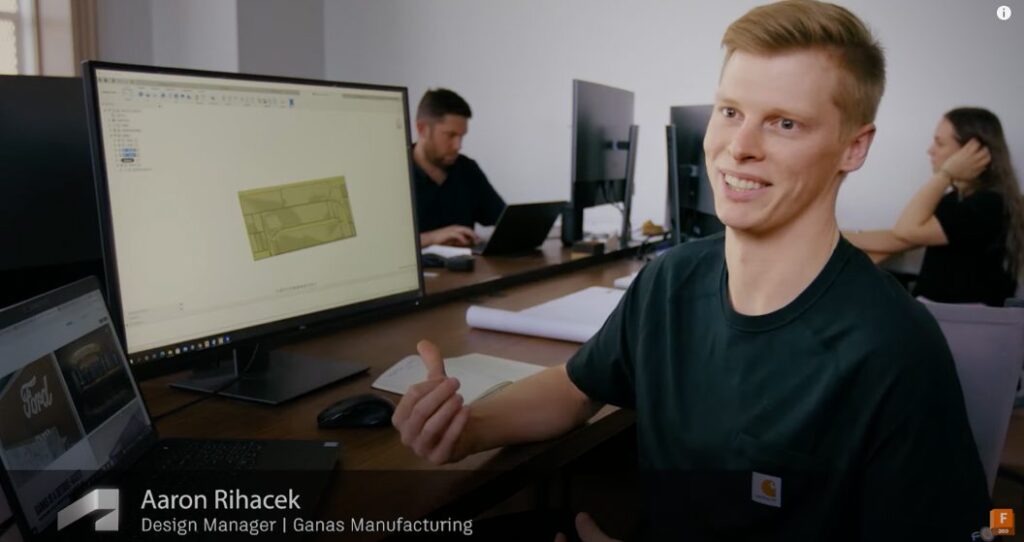
Manually nesting parts to be cut via water jet or laser is arduous and time-consuming. With the Nesting & Fabrication Extension, we’ve made it faster and easier for you to optimize layouts with automatic material, thickness, and part quantity detection. For example, the advanced arrange tool came out of preview last year. This gives you the ability to create multi-sheet arrangements and rotate each part with simple controls for more efficient fabrication. Ganas Manufacturing has been able to leverage this technology to dramatically reduce the time and effort involved in complex cabinetry projects.
Our additive manufacturing environment within the Manufacture workspace has come a long way. It’s now a fully integrated space where you can choose/build the printer requirements you need. You can use your Fusion 360 design (or import third party formats) to slice, set up support structures/internal lattices, and send to the printer, all within the Additive tab.
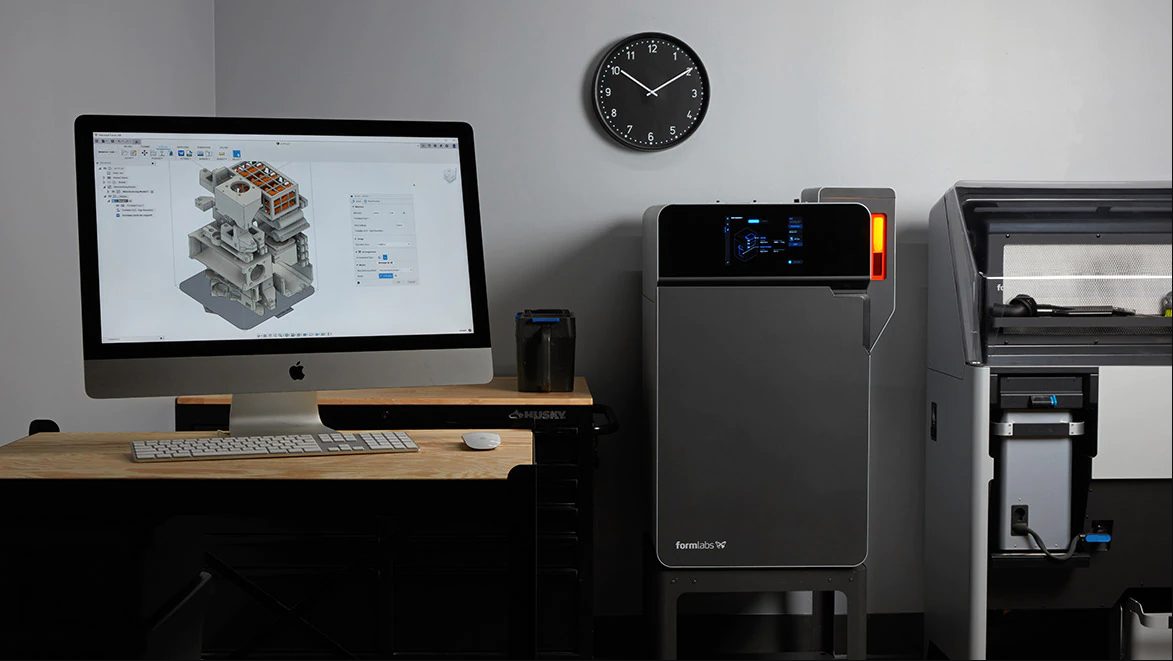
With our additive manufacturing capabilities maturing and our list of supported printers increasing, it made sense for us to partner with Formlabs to provide seamless integration. With every supported printer you can set up prints, create custom support structures, and generate pre-form files direct from Fusion 360. A major advantage here is that you can now maintain associativity between design and manufacturing data without any extra steps.
Fusion 360 has become one of the most recommended tools for machining tasks due to our relentless commitment to investing in its manufacturing capabilities. In 2022, we rebalanced our core vs. Machining Extension offerings so that they make more sense to you. We also made many improvements to our kernel, tool-path quality, and usability. In addition, we’ve made major strides in extending your workflows further with prominent partners in the industry.

If you are a machinist, then you know Haas Automation as one the industry-leading giants in the manufacturing world. One of the great things that got realized through working with them is the Haas Driver for Fusion 360. Providing immediate benefits to you, this is a free add-in on the Fusion 360 App Store and enables instant-on productivity for those who have Haas Milling Machines fitted with the Haas NGC controller.
Using the Haas Driver, NC programs can be sent directly to the machine, or they can be stored locally if preferred. Anytime an NC program is sent to a connected machine, the machine settings and configuration is compared to the machine in the Fusion 360 setup, highlighting any changes in the configuration for you. The Haas Driver removes the need to source, manage and maintain different post processors for each machine.
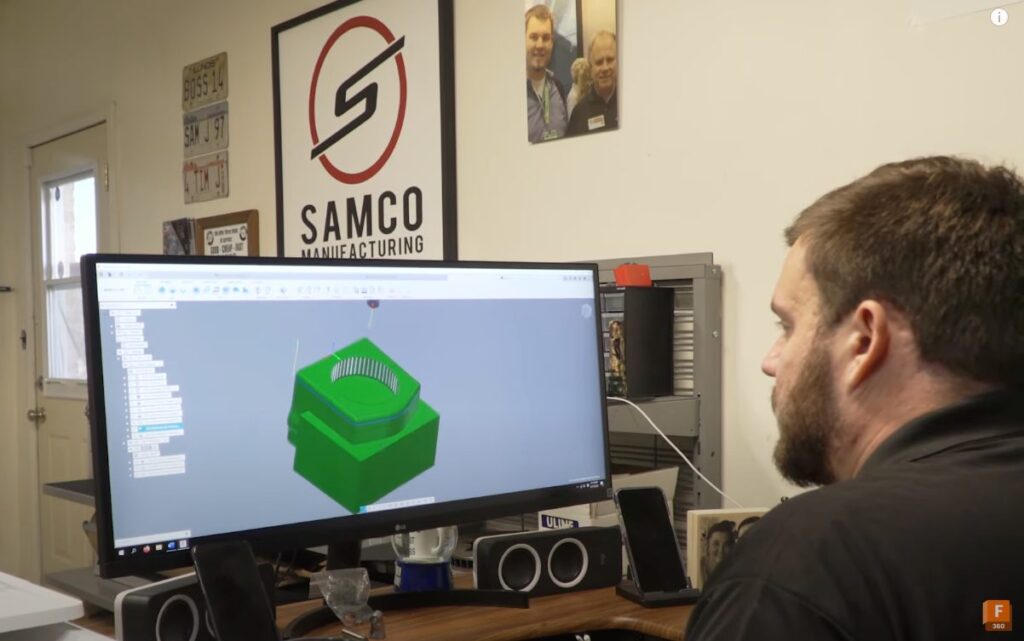
Automation helps propel folks like Sam Johnson, owner of SAMCO Manufacturing, to manufacture parts for various well-known motorsport sanctioning bodies, including the World of Outlaws, the National Hot Rod Association, NASCAR, and IndyCar.


By November of 2022, Fusion 360 had not one, not two, but three new advanced machining strategies for you to try as extension previews: Rotary Pocket, Rotary Contour, and Deburr. All three strategies are highly efficient and customizable. They give you next-level flexibility and control to automate tedious tasks like never before. Of course, this is just the beginning. Here’s a sneak peek at five new machining strategies we’ll be implementing in the near future working with the folks at ModuleWorks.

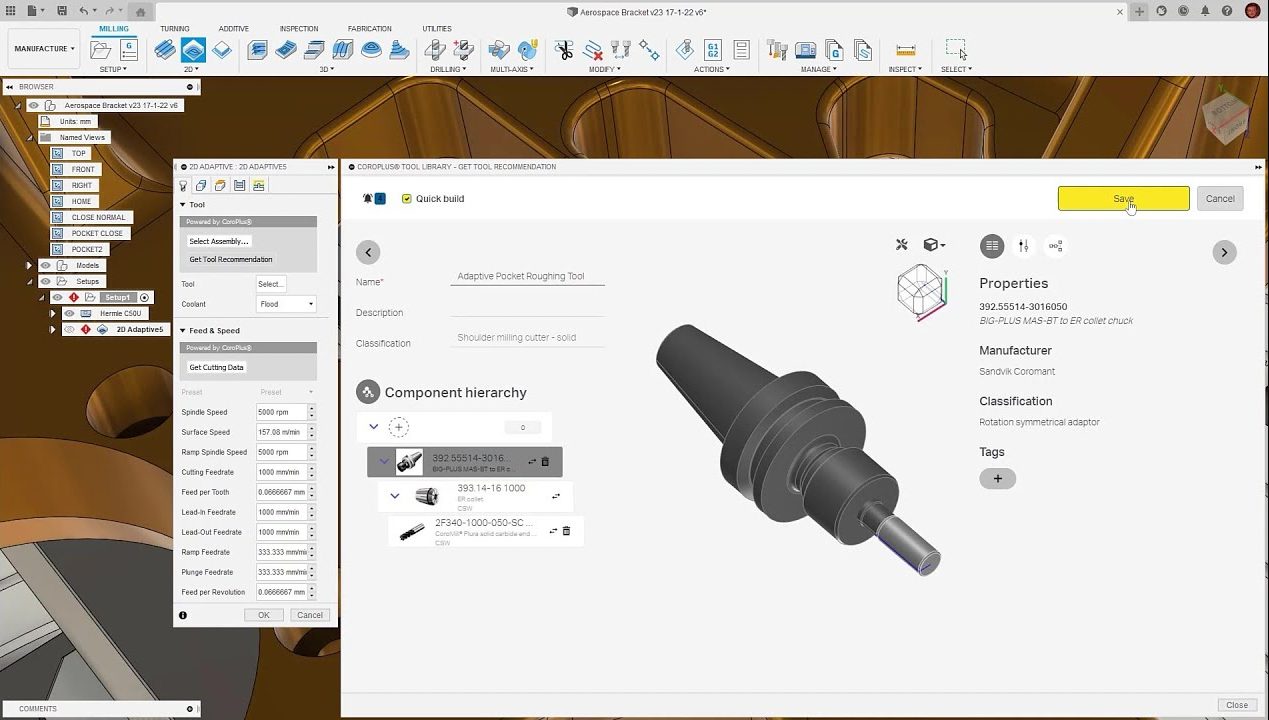
We’ve talked to many machine shop owners, and one thing we’ve heard over and over is that you’re always trying to optimize your time, automate your tasks, and always be making parts. Building your collection of favorite tools takes time and experience. That’s why we partnered with Sandvik Coromant to bring you a highly integrated and capable tool library add-in that plugs right into Fusion 360.
The Sandvik Coromant CoroPlus® add-in for Fusion 360 helps you quickly select the right cutting tool, choose the correct cutting parameters, and transfer the data back into Fusion 360 for seamless CAM programming.
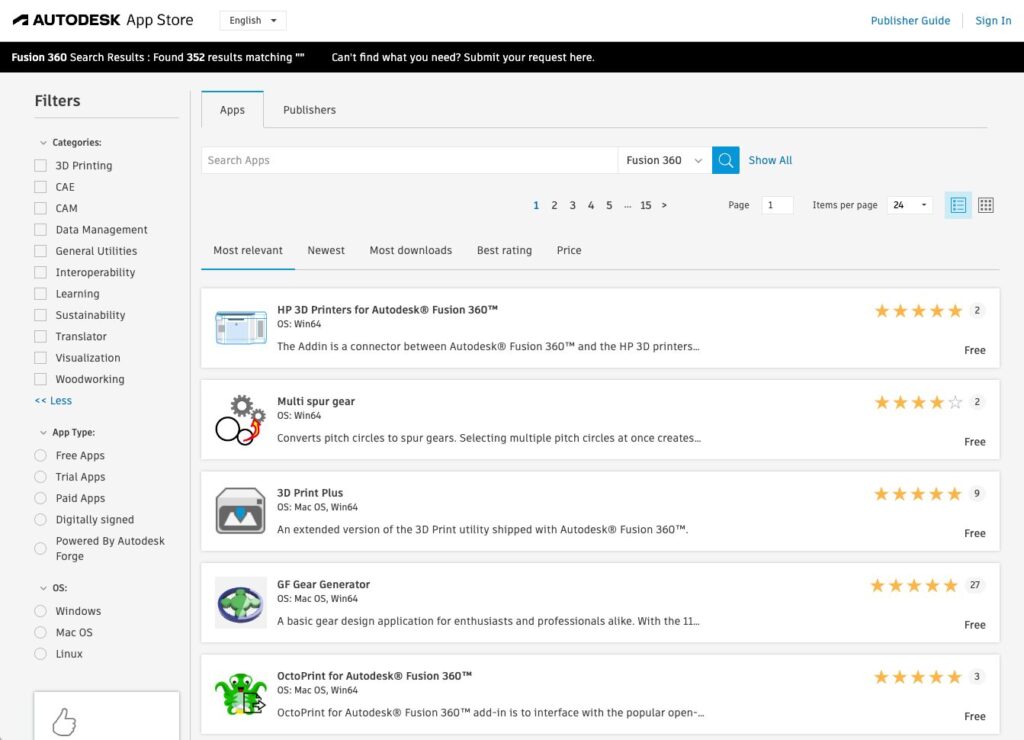
It’s been incredible to see the diversity of Fusion 360 add-ins now available in our Autodesk App Store. Another milestone in extending our technology beyond the software itself is making Fusion data available to third-party app developers to use with the launch of the Fusion data API. Sustainability apps, ERP connections, and BOM apps are examples of what our dev community has since created.
The work we’ve put into expanding our API symbolizes a significant step toward enabling you to connect and extend Fusion with partnering apps, available today and poised to grow in the future. If you haven’t visited the Autodesk App Store recently, it’s worth a look.

And there you have it – our 2022 Retrospective. As we reflect on all that we’ve accomplished together, we are truly grateful for our global community of more than 1.2 million users. Thank you for all that you’ve brought to Fusion 360. What you do with the tools continues to amaze us, and your drive to continuously push the boundaries of what’s possible inspires us to push the limits of what Fusion 360 has to offer.
We are proud of where we are today and even more excited to show you what the future holds. Based on your feedback, we’ve got a lot of juicy projects planned for the year, and we can’t wait to show you what we have planned for tomorrow.
Thank you, be well, and stay tuned!
Keqing Song
By clicking subscribe, I agree to receive the Fusion newsletter and acknowledge the Autodesk Privacy Statement.
Success!
May we collect and use your data?
Learn more about the Third Party Services we use and our Privacy Statement.May we collect and use your data to tailor your experience?
Explore the benefits of a customized experience by managing your privacy settings for this site or visit our Privacy Statement to learn more about your options.